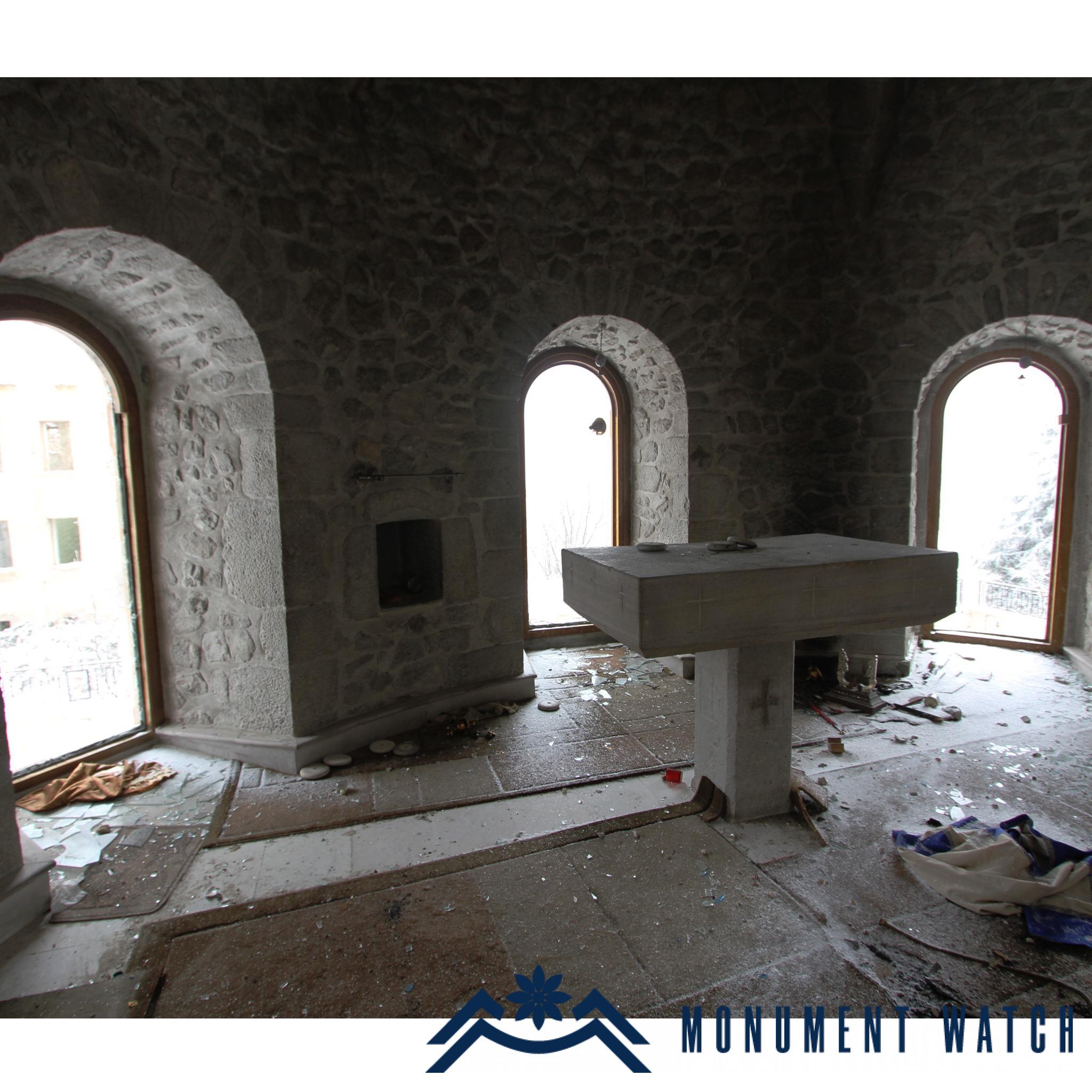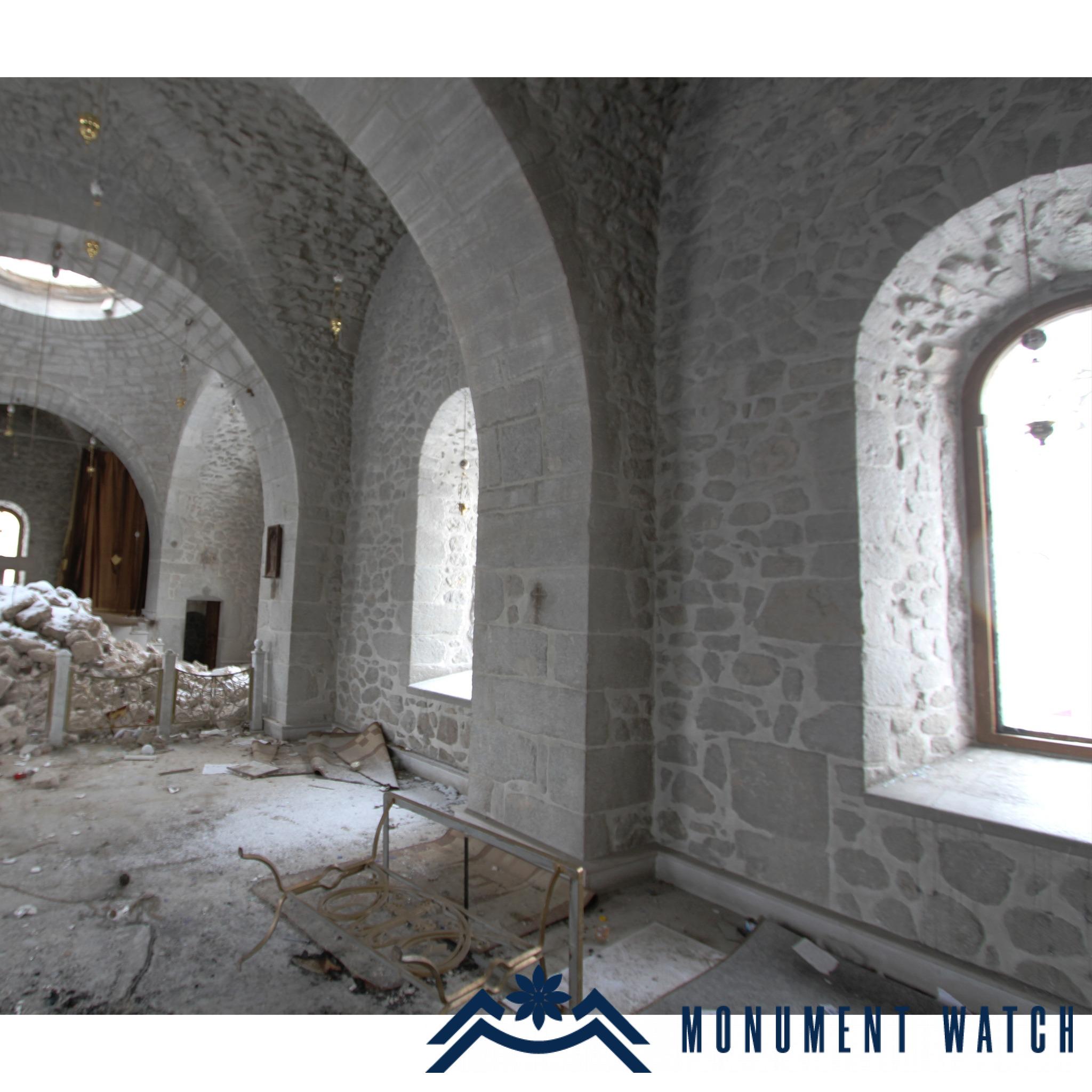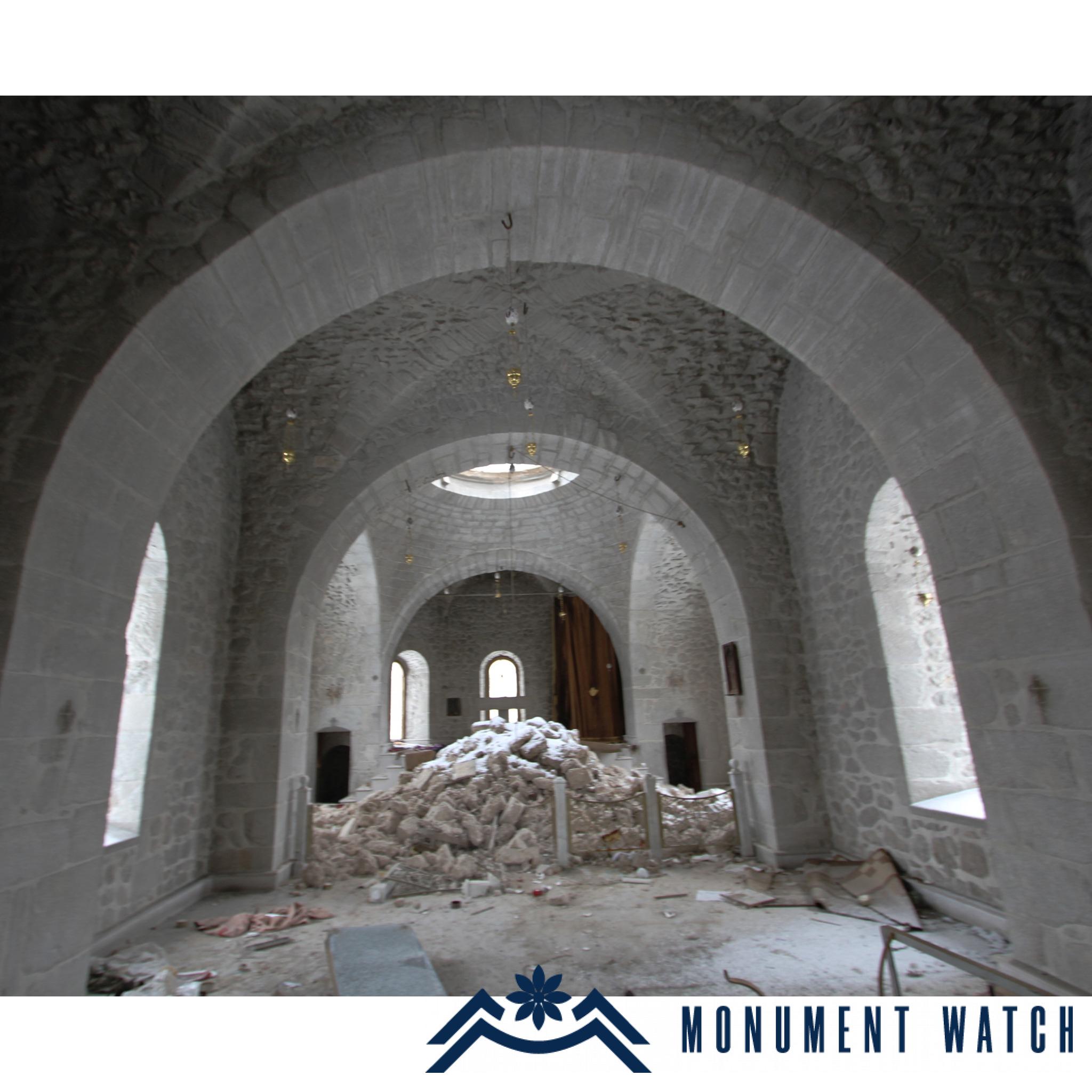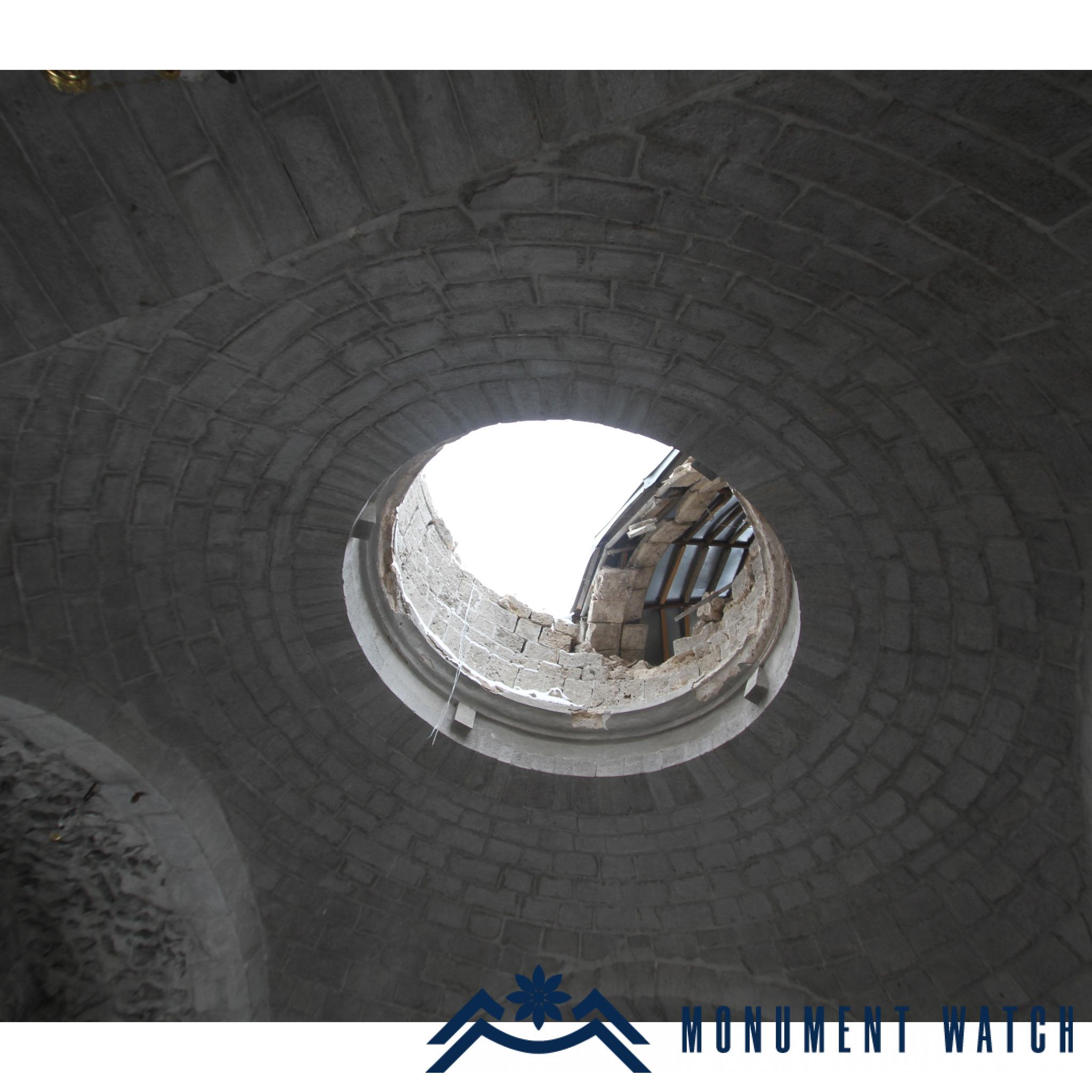The Kanach Zham church in Shushi is being destroyed by Azerbaijanis
On November 9, 2021, as a result of an agreement signed by the Prime Minister of the Republic of Armenia and the presidents of Artsakh and Russia, with the mediation of Russia, the city of Shushi, which is part of the historical NKAO and is considered the cultural city of the Republic of Artsakh, came under the control of the Azerbaijani armed forces. After that, one of the first blows was struck at the very church of Surb Hovhannes Mkrtich (St. John the Baptist), or Kanach Zham (“Green Church”), in Shushi.
The Azerbaijani side has begun to "restore" the church, actually modifying and appropriating it, violating the ritual traditions of the Armenian Apostolic community, as well as the main international laws on the protection of heritage, destroying it.
Photos circulated through Facebook a few days ago, on June 29, confirm the destruction of the church: the dome is destroyed, the holy throne and the holy altar are damaged, the candlesticks for lighting candles are broken, etc., and the sacred stones of the temple are turned into a pile of garbage.
And all this is done at the state level, due to the high level policy, according to which Artsakh Christian buildings are being appropriated, everything that can be destroyed is being destroyed, and what is not, is subjected to Albanianization, Azerbaijanization, and in this case, Russification.
It can be stated with confidence that these reconstructions and destruction of the interior of the church are prohibited by the decision of the International Court of Justice in The Hague made on December 7, by which the court called on Azerbaijan to take all measures to prohibit or prevent the destruction and damage to Armenian cultural property, including, among other things, religious structures. In addition, the Council of Ministers, by its “Resolution No. 2582 on the destruction of cultural heritage in Nagorno-Karabakh”, confirmed the requirement of The Hague Court and, referring to the damage and modification of churches, and called for refraining from such condemned and unacceptable actions.
You also can read the article, published on July 10, 2021 on www.monumentwatch.org – about the “Presentation of the Kanach Zham as Russian Orthodox Church and illegal rites performed there”
Our answer
The illegal reconstruction of the Kanach Zham church in Shushi, the modification and declaration of the building as the Russian Orthodox clearly violate the fundamental principles of historicity, authenticity and integrity of the monument, arising from the Nara document on the authenticity of cultural heritage adopted in Japan in 1994, from the documents adopted by ICOMOS in New Delhi in 2017, as well as UNESCO and other international organizations.
The Nara Document on the Preservation of Authenticity emphasizes that in cases where cultural values appear to be in conflict, respect for cultural diversity demands acknowledgment of the legitimacy of the cultural values of all parties. It is important to underline the fundamental principles of the Nara Document, according to which the responsibility for cultural heritage and the management of it belongs, in the first place, to the cultural community that has generated that heritage, and subsequently to that which cares for it. And the fact of the authenticity of the cultural heritage should not be ignored (the Nara Document on Authenticity, paragraph 8).
In addition, the convention "On the Value of Cultural Heritage for Society" developed by the EU Committee of Ministers on October 13, 2005 in Faro (Portugal), also emphasizes that the significance of cultural heritage is determined by the community, and any expression of the collective thought as a value should be protected for the sake of its naturalness and authenticity. The problem of preserving heritage with all its historical manifestations and chronology belongs to the values of heritage. Our ability to understand cultural values depends on the reliability of information sources or on the degree of trust, which create the necessary basis for determining all aspects of authenticity and which make it possible to understand the type of cultural heritage, its characteristics, meaning, and history (Nara Document on Authenticity, 1994, Japan).
Understanding authenticity plays a decisive role in all processes related to cultural heritage and its preservation. Heritage sites should be researched and assessed based on their cultural context. For this reason, the knowledge of the peculiarities of the cultural heritage in the context of a particular culture (the culture of the Artsakh Armenians), as well as the reliability and accuracy of information sources concerning them, acquires great importance and urgency. Aspects of authenticity can include form and design, material and components, usage and function, location and technique, spirit and feeling, and external and internal factors.
It should also be noted that, according to paragraph "c" of the 9th article of the Second Protocol (1999) "Protection of cultural property in the occupied territories" to The Hague Convention of 1954 "For the Protection of Cultural Property in the Event of Armed conflict", any alteration to, or change of use of, cultural property which is intended to conceal or destroy cultural, historical or scientific evidence, is prohibited.



